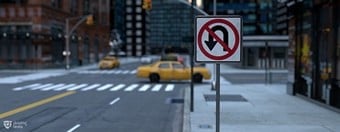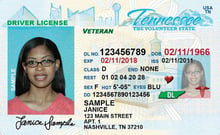Planning to drive yourself to work or your place of business? Economic opportunities are plentiful in Tennessee. Memphis is a major logistics hub, the home of FedEx’s Global Headquarters and the FedEx Express World Hub. Nashville is home to a vibrant music and entertainment industry. Or perhaps you want to drive to explore the exciting nightlife of Nashville or Memphis. Or go sightseeing on the Great Smoky Mountains Byway. Or steep yourself in history on the Natchez Trace Parkway. Whatever your driving plans, if you plan to drive yourself, you’ll have to get a driver’s license. In Tennessee, if you’re under 18 or have never held any driver’s license, you must obtain a learner’s permit to practice supervised driving before applying for a Tennessee license. Requirements for a learner’s permit include being at least 15 years of age, passing a vision test, and passing a written knowledge test on driving theory. If you’re under 18, your school must certify that you are attending or have graduated from there, and your parent or guardian must submit an affidavit giving their signed consent to your driving and accepting responsibility for it. If you’re under 18, you can take the knowledge test online with your parent or guardian proctoring it. Otherwise, you must take the test at a DMV Driver Service Center (full service). All 30 questions on the Tennessee DMV written test are based on sections B and C of the official Tennessee driver’s manual (Tennessee DMV Handbook (TN Driver's Manual) 2025). The passing score is 80%.
This is our second Tennessee Permit Practice Test. Like our first permit practice test, its purpose is to help you pass the official Tennessee written knowledge test on your first attempt. It is up to date as of December 2025 and based on the official Tennessee driver’s manual. This practice test is multiple choice. Each question comes with several answer options. You must choose the best or most complete answer. If you need help, call on our AI assistant. It can supply hints and explanations and answer your own questions about driving theory. In addition to the official manual, we also offer our own Tennessee Permit Test Study Guide, which you should read to get ready for the day of your knowledge exam. It covers how to prepare yourself mentally and physically to be at your best, what documents to have with you, fees you may have to pay, and test questions that applicants frequently miss. With 30 questions on the Tennessee permit test, it’s important to prepare!














